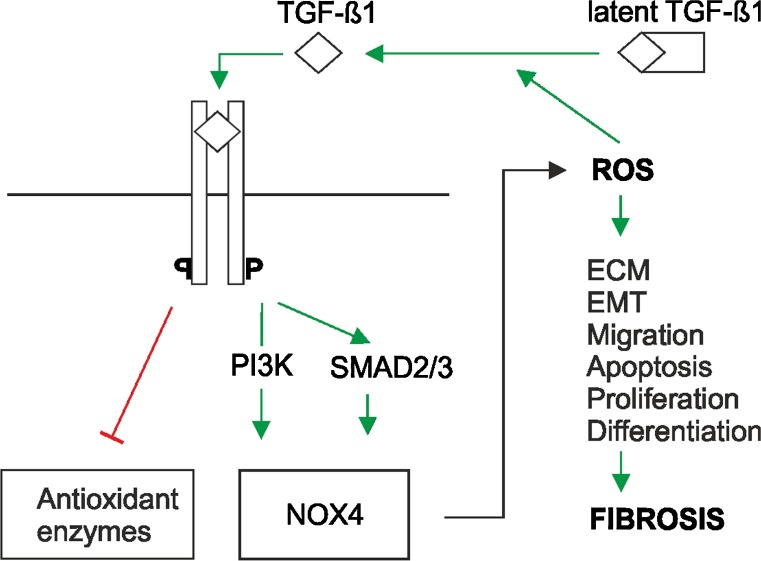Fig. 4.
ROS are involved in transforming growth factor-β (TGF-β)-mediated fibrosis. Various cell types such as platelets, parenchymal cells and inflammatory cells (e.g., lymphocytes, macrophages) can release TGF-β1. After conversion of the latent to the active form, TGF-β1 binds to its receptor and induces SMAD2/3 and/or phosphatidyl inositol 3-kinase (PI3K) signalling to express various genes, among them that for NOX4. NOX4 in turn leads to ROS production. Enhanced ROS may activate the proliferation, migration and differentiation of fibroblasts plus epithelial-to-mesenchymal transition (EMT), apoptosis of epithelial cells and/or excessive extracellular matrix (ECM) deposition. In addition, TGF-β1 contributes to ROS production by attenuating the expression of antioxidant enzymes such as glutaredoxin, catalase, glutathione peroxidase, glutathione S transferase, superoxide dismutase and the heavy subunit of gamma-glutamylcysteine synthetase

